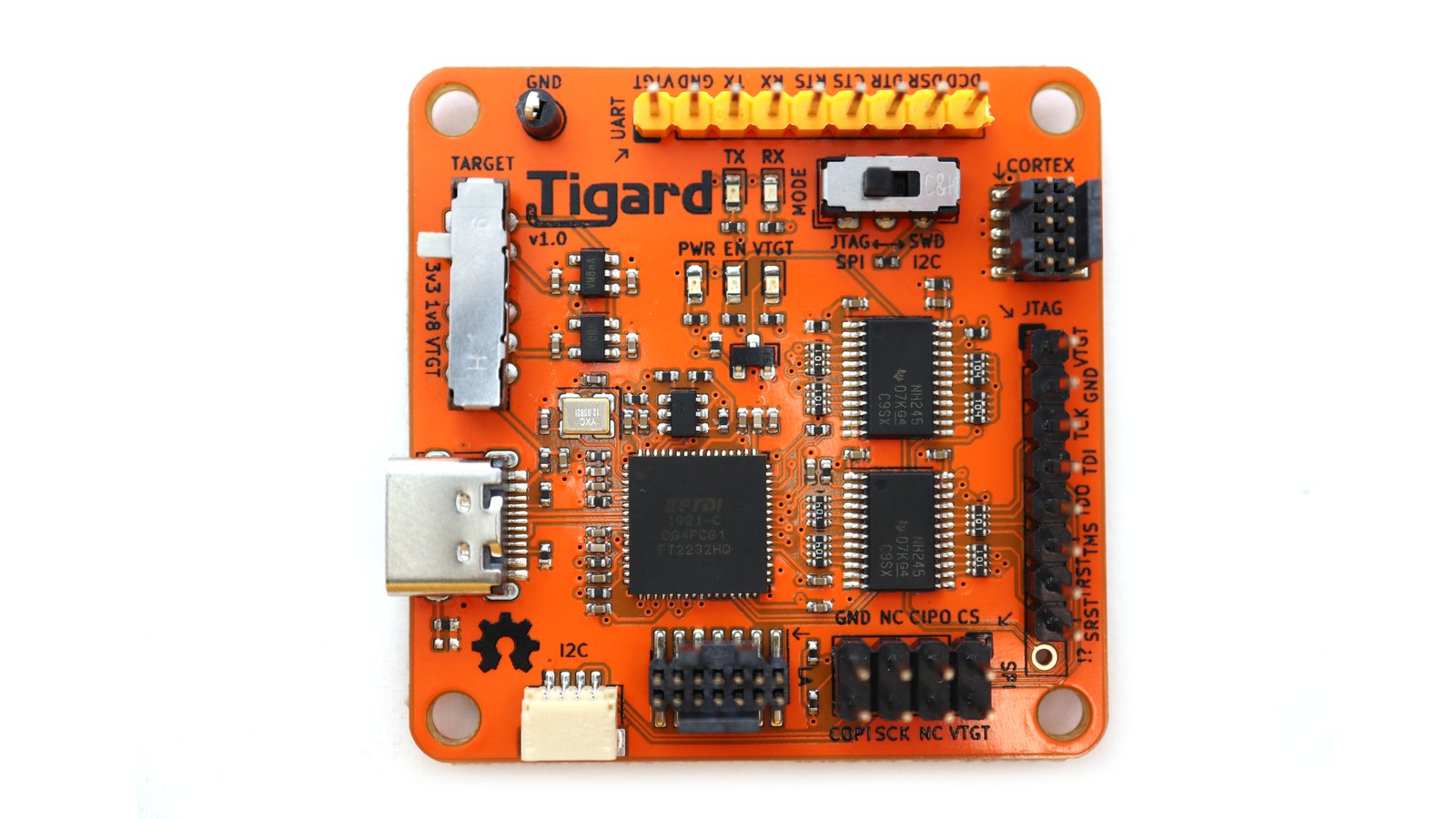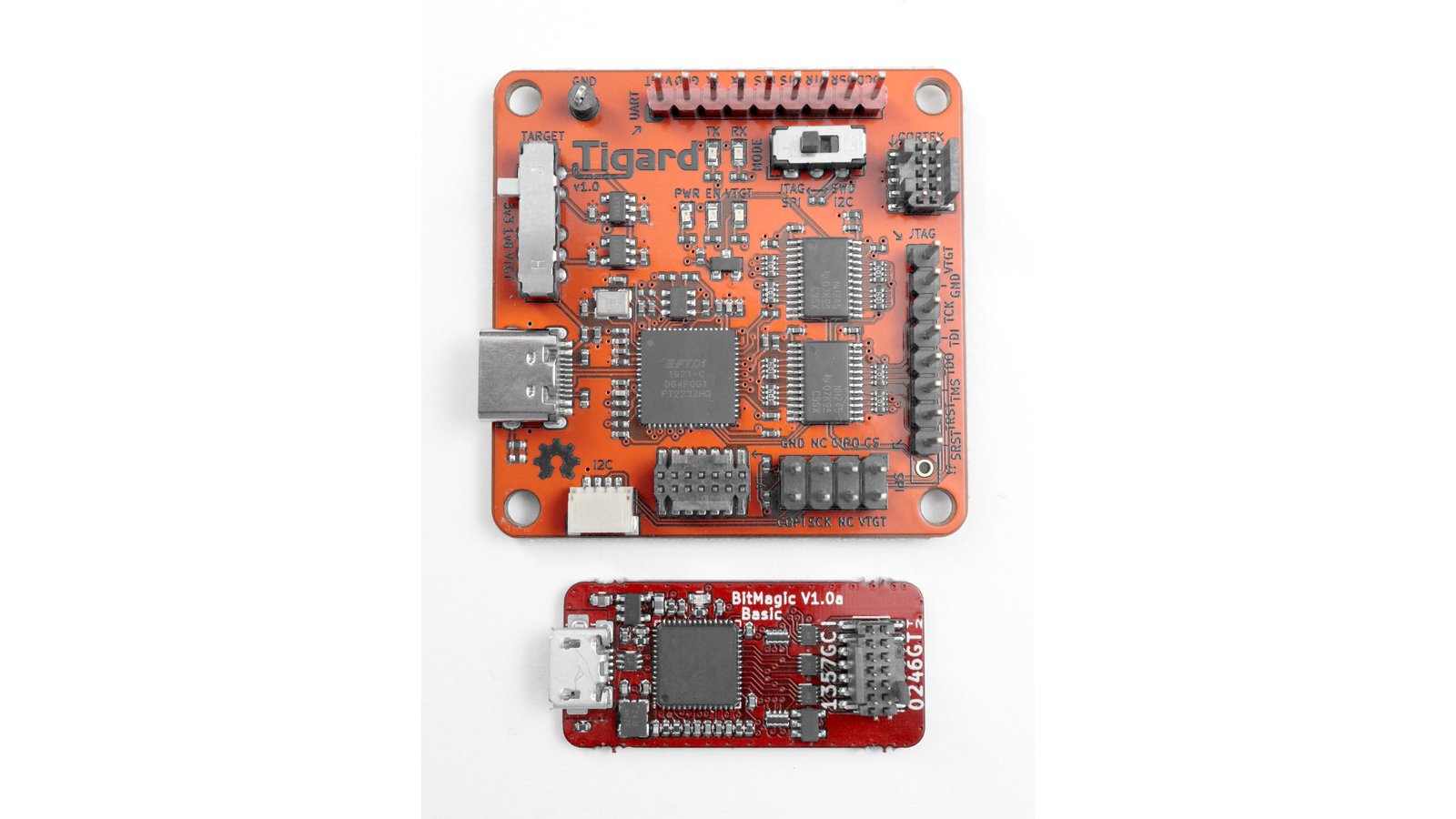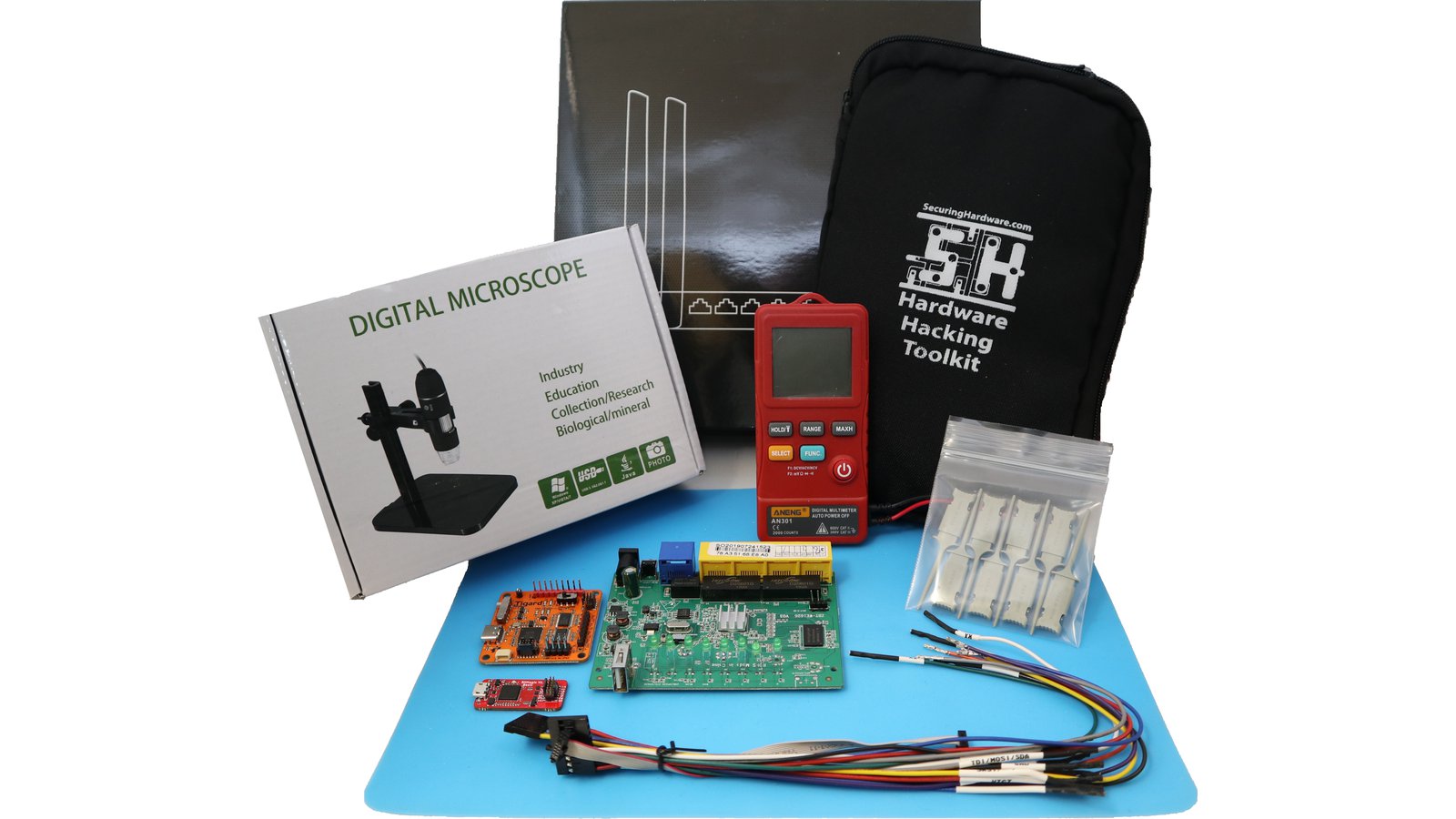SecuringHardware.com
Protocol Interfaces
KiCad
Tigard
An open source FT2232H-based, multi-protocol, multi-voltage tool for hardware hacking
Funding ended on Dec 10, 2020 at 03:59 PM PST.
SecuringHardware.com
Protocol Interfaces
KiCad
Funding ended on Dec 10, 2020 at 03:59 PM PST.
Tigard is an open source FT2232H-based, multi-protocol, multi-voltage tool for hardware hacking. By incorporating commonly used pin-outs, a labelled wiring harness, onboard level-shifting, and a logic analyzer connection, it is designed specifically for attaching to and communicating with low-speed interfaces on reverse-engineered hardware targets.
Tigard combines support for all of the most-used interfaces and most-needed features on to a simple board. As a drop-in replacement for dozens of other hardware tools based on FTDI chips, it has native support from a number of commonly used hardware tools like OpenOCD, FlashROM, and more.
There’s a wide range of more advanced hardware hacking tools available. Tigard serves as an excellent complement to these by supporting the 20% of the features that enable 80% of the common hardware hacking tasks involved with speaking various protocols. Whether you’re new to hardware hacking, or you just need a quick and simple solution, Tigard is designed to be the best first step - sometimes followed by a more capable tool, if needed.
Documentation and hardware files can be found in the Tigard Tools GitHub repository.
In general, Tigard was designed to work as-is with several tools and libraries that already support the x232H family of chips. This includes:
Thanks to the drop-in compatibility with so many tools, there is no need for Tigard-specific tools to interface with any targets. If you do find the need to customize a tool or script using Tigard, it should work fine with any other FT2232H interface board.
| Tigard | C232HM Cable | UM232H-B | Adafruit FT232H | CJMCU FT232H | BusBlaster | BusPirate | Glasgow | |
|---|---|---|---|---|---|---|---|---|
| UART | Dedicated | Shared | Shared | Shared | Shared | With Gateware | Shared | With Gateware |
| SPI/JTAG | Dedicated | Shared | Shared | Shared | Shared | With Gateware | SLOW | With Gateware |
| I2C | Hard Switch | Add'l Parts | Add'l Parts | Hard Switch | Add'l Parts | With Gateware | Yes | With Gateware |
| SWD | Hard Switch | Add'l Parts | Add'l Parts | Add'l Parts | Add'l Parts | With Gateware | Yes | With Gateware |
| Headers | ALL, labeled | Loose Wires | wires/2.0 mm | I2C, Through Holes | Through Holes | Header, Generic | Header, Generic | Header, Generic |
| Level Shifting | 1.6-5.5 V | N | N | N | N | 1.5-3.3 V | 0.8-5 V, with effort | 1.8-5.4 V |
| USB | Type C | Type A | Type A | Type Micro-B | Type A | Type Mini-B | Type Mini-B | Type C |
| Open Hardware | Y | N | N | Y | N | Y | Y | Y |
| Wire Harness | Included | Built-in | Varies | N | N | N | Additional | Additional |
| Cost | $39 | $43 | $16 | $15 | $9 | $35 | $27 | $?? |
Why does all this matter?
One open source FT2232H-based, multi-protocol, multi-voltage Tigard board for hardware hacking, with wiring harnesses included.
Combine Tigard with a Bitmagic Logic Analyzer for live debugging of serial protocols.
Bitmagic is an open hardware FX2-based logic analyzer. It’s designed specifically to work with the open source fx2lafw firmware and the open source Sigrok logic analyzer suite, including the Pulseview GUI.
Bitmagic supports eight channels sampled at up to 24 Msps. It works like any other logic analyzer and includes a labeled wiring harness so you can use it with any 2.54 mm pin headers or your favorite probe clips.
It also includes a 14-pin cable for connecting directly to Tigard. When it’s all wired up, you can use Pulseview to monitor all the communications between Tigard and your target system. This is helpful for debugging electrical, protocol, and signal integrity issues.
We’ve used a number of different tools for our own research as well as for our Applied Physical Attacks training, but none of them seemed to be just the right combination of features we need with the simplicity that we want. Tigard came about in order to create the tool we needed to teach the basics of hardware hacking on embedded and IoT systems.
Faced with a calendar free of travel and face-to-face training commitments, we used the time to design, build, and test Tigard, as well as bring our hands-on in-person training to a self-paced online format, updated to work with Tigard and Bitmagic.
This kit includes:
This kit goes hand-in-hand with online access to 3+ days of lectures, labs, and support that will guide you through the process of:
Tigard was designed as a drop-in replacement for other FT232H-series devices. In general, there are zero software changes required for support, though customizing configuration files might be necessary.
This greatly simplifies the support requirements for Tigard, and allows easy A/B testing with other FT232H-series devices when potential issues arise.
The entire design is open hardware, designed in KiCad with a public git repository. The documentation covers using a variety of software tools to complete several common tasks with Tigard. Should you have difficulty, Tigard has LEDs that will assist in debugging your target, your protocol, and your software.
Revision V0.0 of Tigard was the first prototype. All four boards worked properly, validating the design and assembly process.
Revision V0.1 and production of 80 boards quickly followed with some minor fixes, but primarily with changes to make the pin-outs better organized and easier to use. These boards have been tested in the field over the past three months, in both SecuringHardware.com’s Hardware Hacking training and regular work.
Revision V1.0 added a few low-risk features. Ten boards were produced to test the assembly process. The initial production run is already complete and tested great. We’re confident they’re ready to go and we’re now preparing for fulfillment!
Tigard will be assembled and tested at our our overseas contract manufacturer. Once complete and delivered to us in Portland, Oregon, we’ll do another round of QA testing as well as provisioning the EEPROMs with unique serial numbers. Then, we’ll pack the boards and harnesses and deliver them across town to Crowd Supply to fulfill our pledges.
Building hardware always involves risk but that risk is shrinking on a daily basis:
As we proceed through the campaign, we’ll share more details about our assembly and testing process through our updates.
Produced by SecuringHardware.com in Portland, OR.
Sold and shipped by Crowd Supply.

A Tigard board with wiring harnesses
Want to buy this item? Check the current project page for the latest information.

Combine Tigard (with wiring harnesses) with a BitMagic Basic Logic Analyzer for live debugging of serial protocols
Want to buy this item? Check the current project page for the latest information.

Toolkit with Tigard, Bitmagic, and more - everything you need for the self-paced "Applied Physical Attacks on Embedded and IoT Systems" online course which covers the basics of hardware hacking on embedded systems. Includes access to all online lectures, labs, and supporting materials.
Want to buy this item? Check the current project page for the latest information.

Portland, OR · securinghardware.com
SecuringHardware.com offers hands-on training on hardware hacking skills geared towards security testers and product security developers.